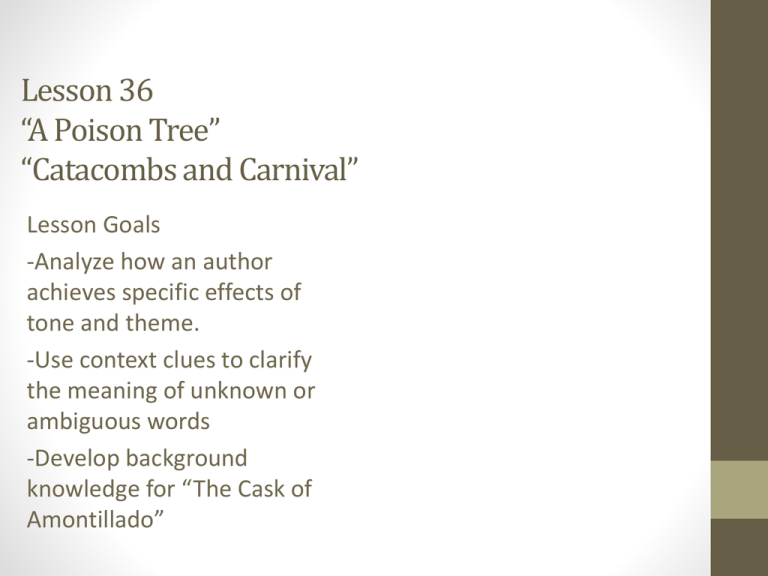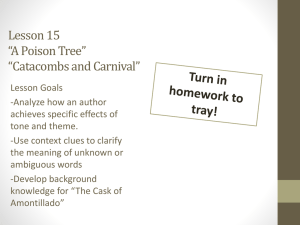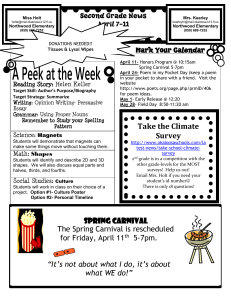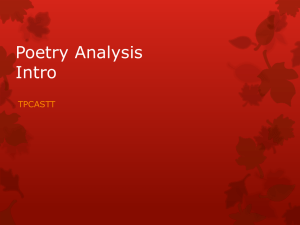Lesson 36 *A Poison Tree* *Catacombs and Carnival*
advertisement

Lesson 36 “A Poison Tree” “Catacombs and Carnival” Lesson Goals -Analyze how an author achieves specific effects of tone and theme. -Use context clues to clarify the meaning of unknown or ambiguous words -Develop background knowledge for “The Cask of Amontillado” Bell Ringer Tone & Poem Review 1. What is tone? 2. Poetry Review: lines and stanzas Activity 2.3 page 92 “A Poison Tree” by William Blake I was angry with my friend: I told my wrath, my wrath did end. I was angry with my foe: I told it not, my wrath did grow. And I watered it in fears, Night and morning with my tears; And I sunned it with smiles, And with soft deceitful wiles. And it grew both day and night, Till it bore an apple bright. And my foe beheld it shine. And he knew that it was mine, And into my garden stole When the night had veiled the pole; In the morning glad I see My foe outstretched beneath the tree. Visualizing the Poem 8 groups, two lines per group • You and your group will be assigned a two line section of the poem • Together, you will discuss what you all imagine these two lines to look like – picture it in your heads! • Next to the two lines, draw an image that represents your group’s discussion • Think about the themes and ideas of the poem and incorporate them in your image • When finishing, draw your image in the corresponding box on the board Marking the text: Analyzing Poetry • Let’s go back to the poem and mark the following: • Highlight the different choices the speaker makes about revenge • Where does the speaker shift in attitude (tone)? Mark a star there! • Describe the attitude of the speaker in different places in the poem (make a number next to the line, then write the notes about the attitude in the margin) • Paraphrase the last two lines (put it in your own words but keep it the same length). How does the poem end? Based off the last class discussion and the ideas of the poem, what is our theme? Activity 2.4 Catacombs and Carnival • Groups of 4! • Organize the words into four different categories. • Use your best judgment—you probably won’t know all of the words • Work as a team to decide how the words should be categorized • Be sure to decide what each category is labeled • Share out—how did your group categorize the words, and why? Carnival • The day before Ash Wednesday • Public celebrations: parades, masks, street parties, elements of a circus • People dress up in masquerade: in costumes with masks Diffusing the Passage: Catacombs and Carnival on page 94 • As we read the first paragraph together, highlight unfamiliar words. • After we read the paragraph, we’ll define each individual word. • Then we’ll go back and reread the paragraph after understanding the terms. • Continue the last two paragraphs with you and a partner








